teachers'domain: Digital Media for the Classroom and professional Development
User: Preview
Two heads may be better than one when you're trying to solve a tricky problem. But when it comes to reproduction, are two parents always better than one?
CMS PREVIEW MODE
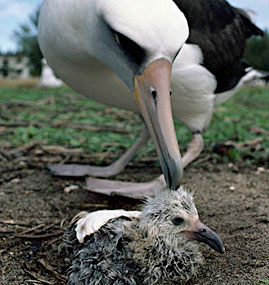
Reproduction—the process of having children or offspring—is a highly important step in the life cycle of all living things. Without it, entire species would disappear as their individual members died off. Living things reproduce using one of two basic methods. Each one has advantages (its good points) and disadvantages (its bad points). In this lesson you’ll learn about these two methods: sexual and asexual reproduction.
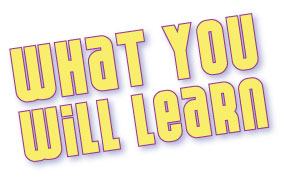
Goals
Here are the big ideas you will learn about in this lesson:
Strategies
You will be using many reading and writing strategies to complete this lesson. The key strategies that you will focus on are:
Vocabulary
Read these words and their definitions. When you see them, you may click on them to read the definition again.
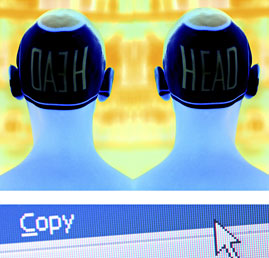
Have you ever wished you could make a copy of yourself? In asexual reproduction, a single parent does just that. Because the offspring are copies of the parent, they share the same traits as the parent. That is, the parent and the offspring almost always look and behave exactly alike.
What are some reasons why a living thing might want exact copies of itself? Write your answer here.
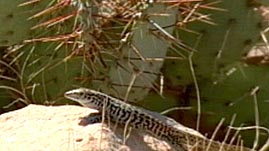
Video
Length: 2m 05s
An amoeba (uh-MEE-buh) is a kind of living thing made of just one cell. It uses asexual reproduction to create more amoebas. First, an amoeba makes a copy of its full set of genes. (Genes are like instructions that exist inside every cell of every living thing. They influence how every organism looks and acts.)
Next, the amoeba divides in two. Each of the two amoebas now contains its own set of genes. These two amoebas can then pass along these genes to their own offspring.
Not all asexual reproducers have just one cell like amoebas. And not all asexual reproducers divide in two to create their offspring. Watch this video segment to learn about an unusual species of lizard.
Click "View" on the left to watch the video.

Most animal, insect, and plant species reproduce in pairs, or twos. In sexual reproduction, two individuals of the same species each contribute a half-set of their genes. Thus, in their whole set of genes, offspring inherit, or receive from their parents, a mixture of traits.
Write down some traits that parents pass on to their offspring. In what ways do these traits help a species survive? Use the box below for your ideas.
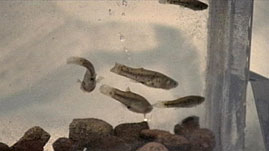
Video
Length: 3m 12s
You will now learn about two different species of fish that live in the same environment. One reproduces asexually, the other sexually. This video explains how sexual reproduction provides an important advantage against the spread of disease. Click "View" on the left to watch the video.
Then show what you've learned by answering these three questions. Be sure to save all your answers before you go to the next screen.
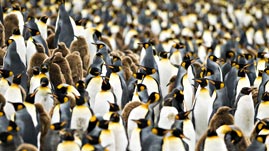
Document
While most living things are born as a result of sexual reproduction, others result from asexual reproduction. In this passage, you will read more about the advantages and disadvantages of each method of reproduction.
Click "View" on the left to read the passage.
After you have finished reading the passage, describe in your own words what natural selection means in the box below. Give one example of how an animal's environment can influence the method it uses to reproduce.
Interactive
Think of what you've learned so far about asexual and sexual reproduction. In this activity, you will compare some basic ideas about these two reproductive methods. You may want to watch the videos again or review the passage before doing the activity (see below).
Click "View" on the left to begin the activity. Your teacher will review the answers with you.

Video
Length: 2m 05s

Video
Length: 3m 12s

Document
Interactive
You will now check your understanding of the vocabulary words for this lesson by placing them in sentences. Click "View" on the left to begin the activity.
Before moving to the next screen, choose two words from the vocabulary list and write a new sentence for each word.
Vocabulary words: reproduction, offspring, traits, clone, genes, natural selection
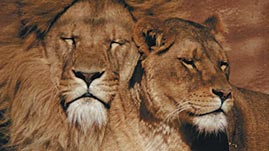
In this lesson, you have learned about the two forms of reproduction and how they relate to natural selection, the process that drives evolution. You will now write an essay that shares what you have learned and what you think about it.
Begin by reviewing your notes. Click "review my work" above and view print out the screen that pops up.
Final Assignment Instructions
Teachers' Domain, Reproduction: One Goal, Two Methods, published December 13, 2010, retrieved on April 5, 2025,
http://www.teachersdomain.org/resource/midlit10.sci.splrepro/
Media Type:
Self-paced Lesson



Funding for the Walmart Middle School Literacy Initiative on Teachers’ Domain is provided by the Walmart Foundation. Early funding for Inspiring Middle School Literacy was provided by the Leon Lowenstein Foundation.
National K -12 Subject:
WGBH is trying to develop materials that better meet the needs of our users. Please take this brief survey to share how you use these resources and to provide feedback on your experiences using these materials. Take the Survey!
In this media-rich lesson designed to enhance literacy skills, students learn about the advantages and disadvantages of the two basic forms of reproduction for the living things that practice them.
This is a student-directed lesson. Students will complete the lesson online, then print a summary of their notes and interactive activity results. Students can use this printout for reference when completing the final writing assignment offline.
Download and print the Reproduction: One Goal, Two Methods—Teacher's Guide (PDF) for essential background information and suggestions for ways to support the lesson.
Technical notes
To help improve this service, please report and describe any standards correlations that you find to be inaccurate.
Academic standards correlations on Teachers' Domain use the Achievement Standards Network (ASN) database of state and national standards, provided to NSDL projects courtesy of JES & Co.
![]()
We assign reference terms to each statement within a standards document and to each media resource, and correlations are based upon matches of these terms for a given grade band. If a particular standards document of interest to you is not displayed yet, it most likely has not yet been processed by ASN or by Teachers' Domain. We will be adding social studies and arts correlations over the coming year, and also will be increasing the specificity of alignment.
You must be signed in to see standards matches for your state.
 Loading Standards
Loading StandardsMajor funding for Teachers' Domain was provided by the National Science Foundation.
Teachers Domain® Home | Change Edition
About Teachers' Domain | Contact Us | Privacy Policy | Terms of Use
Teachers' Domain: © 2002-2025 WGBH Educational Foundation | shopPBS Educational Media
